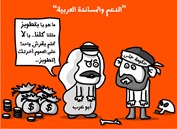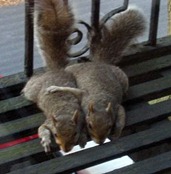A chronicle of my trip to Jerusalem, Cairo and Rome from November 3-18. If you want more information on a picture, hover your mouse over it for a pop-up caption. If you want to see a bigger version of the picture, click on it.
We arrived in Cairo late on the evening on Thursday (November 4). Getting through Customs and entering the city took quite a bit longer than I had expected (plus it cost $15 just to get into Egypt!), but we finally hailed a cab at about 11:30 pm local time, and headed to the French Institute of Oriental Studies (apparently, ever Dominican institution founded in the Middle East is French).
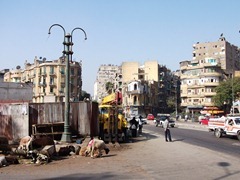 Our cab driver was the second-most aggressive driver in Egypt, which puts him high in the rankings world-wide (I say second-most aggressive because another driver nearly killed us and didn’t bat an eye). I’ve been on the road in three Central American countries and they don’t hold a candle to the streets of Cairo. Most streets don’t have any markings on them at all, which means that there are as many lanes as any individual driver chooses. Even where the streets are marked, drivers treat the marks as kind suggestions at best (which can be frightening given that the marked streets tend to be bigger, more-used thoroughfares). That lovely road that looks to be a 6-lane highway? In practice, I’d bet on closer to 10-12, depending on the nanosecond you choose to count.
Our cab driver was the second-most aggressive driver in Egypt, which puts him high in the rankings world-wide (I say second-most aggressive because another driver nearly killed us and didn’t bat an eye). I’ve been on the road in three Central American countries and they don’t hold a candle to the streets of Cairo. Most streets don’t have any markings on them at all, which means that there are as many lanes as any individual driver chooses. Even where the streets are marked, drivers treat the marks as kind suggestions at best (which can be frightening given that the marked streets tend to be bigger, more-used thoroughfares). That lovely road that looks to be a 6-lane highway? In practice, I’d bet on closer to 10-12, depending on the nanosecond you choose to count.
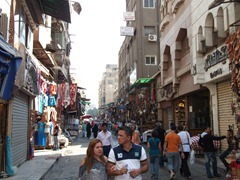 Maybe it’s just because we arrived on what is essentially Friday night in the Muslim world (Friday is the Muslim Holy Day), but Cairo even at midnight was alive and bursting with energy. From my window, I can hear horns bleating all hours of the day and night. The biggest difference I’ve noticed is how dirty Cairo is. The filth is party due to the fact that, as Father Kevin put it, we’re on the edge of a sandbox as big as the United States. Everything is covered in a thin layer of sand. But beyond the sand, the city is just polluted. You can smell it all the time, see it on every street.
Maybe it’s just because we arrived on what is essentially Friday night in the Muslim world (Friday is the Muslim Holy Day), but Cairo even at midnight was alive and bursting with energy. From my window, I can hear horns bleating all hours of the day and night. The biggest difference I’ve noticed is how dirty Cairo is. The filth is party due to the fact that, as Father Kevin put it, we’re on the edge of a sandbox as big as the United States. Everything is covered in a thin layer of sand. But beyond the sand, the city is just polluted. You can smell it all the time, see it on every street.
 We were greeted at the Institute by a Dominican brother who welcomed us with bread and cheese, then quickly settled into our rooms and headed out the next morning to the al-Hussein Oriental Bazaar, one of the largest bazaars in the world (a bazaar is a lot like a market). All the prices here are negotiable, which always takes me a while to get into when I travel. Merchants yell at us as we pass, offering (and more often demanding that we purchase) every sort of good imaginable. The merchants are shockingly pushy – if you’re not very firm, you’ll get pulled into their shop and they’ll practically take money out of your wallet. They’re incredible salespersons (in fact, according to the Lonely Planet guidebook, the merchants who work this bazaar are better than anyone else in the world) and negotiating with them is frustrating at first, but can be quite fun. I managed not to get ripped off too badly by the end of the day.
We were greeted at the Institute by a Dominican brother who welcomed us with bread and cheese, then quickly settled into our rooms and headed out the next morning to the al-Hussein Oriental Bazaar, one of the largest bazaars in the world (a bazaar is a lot like a market). All the prices here are negotiable, which always takes me a while to get into when I travel. Merchants yell at us as we pass, offering (and more often demanding that we purchase) every sort of good imaginable. The merchants are shockingly pushy – if you’re not very firm, you’ll get pulled into their shop and they’ll practically take money out of your wallet. They’re incredible salespersons (in fact, according to the Lonely Planet guidebook, the merchants who work this bazaar are better than anyone else in the world) and negotiating with them is frustrating at first, but can be quite fun. I managed not to get ripped off too badly by the end of the day.
Even more than in Jerusalem, I noticed a strong xenophobic reaction in myself. Egypt is thoroughly non-Western. Egyptians don’t seem to have any great love for America (though they’re not especially hateful either). In the less modern areas of the city, everyone seems to be selling something, and their friendliness so often degraded into a sales pitch that I quickly grew wary of anyone who complimented by beard (“You look like Egyptian man!” while stroking a fake beard) or my tattoos (“Shalom! Where you from?” upon seeing my Star of David, or more frequently simply, “Hey, Mr. Tattoo! Nice tattoos!”).
Beyond that, this was my first time in a truly Muslim culture. I grew up (and still live) in the Midwest, where we have a church building on every corner. Where (as a rule) our culture’s greatest, most grandiose architecture was built to the glory of the Holy Trinity. Where even as church attendance plummets, the effects Christianity has had on our culture are inescapable.
Not so in Cairo. Though Egypt was once Christian for several hundred years, you’d never know it today. Egypt was one of the first countries to convert to Islam, and so has been Muslim for about 6 times as long as America has been a nation. The culture is thoroughly Muslim. Nearly every woman wears a headscarf (if not a full burka). Many men wear the traditional long Muslim robe. There’s narry a BLT to be found (and I’m pleased to report that the KFC Double-Down sandwich is not served in Cairo’s KFCs). In our cab rides all over the city, we’ve seen one dilapidated building bearing a cross.
I’ve felt very out of place here. And much to my shame, I’ve felt afraid, suspicious when I’ve been out in the City proper. I say that’s to my shame because no one here has treated me as anything worse than an ignorant American tourist (which is to say, the shop owners try to cheat me out of money). And that’s the exception rather than the rule. Most people have been very kind and helpful. Very friendly.
Once I overcame my initial shock at being in such a different place, I began to notice similarities. In the shop windows of women’s boutiques, mannequins sporting designer headscarves stand next to others displaying fashions that would draw attention at any American night club. At the Pyramids and the Egyptian Museum (more on these visits tomorrow!), Muslim school children ignore their teachers and laugh with their friends as they run from point to point. As we were heading to get some lunch, a young Muslim woman came up beside me and started examining my tattoos. She laughed and smiled at me, flashed me a thumbs-up and then pantomimed lifting weights before heading off in a different direction, waving and calling out a goodbye as she went.
My time in Cairo has helped me to see that, despite the (very) foreign exterior, beneath all the strange customs and incomprehensible Arabic, the Egyptians are shockingly familiar. Beneath the sand and dirt, Cairo’s smog isn’t all that different from LA’s. The mosques aren’t gathering terrorists. These people are just like you and me. They’re just as ethnocentric and patriotic. Just as passionate (or indifferent) about their beliefs. They love and fear and want and need just like us. Of course, recognizing our common humanity doesn’t solve any problems, but it at least gives us a good place to start talking.

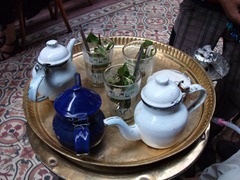

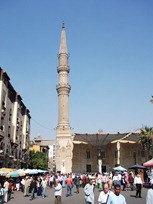



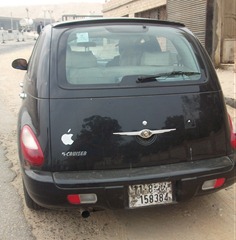
 11. Batman really is the best literary character.
11. Batman really is the best literary character. And that’s scary, because as soon as you have influence over another person, it’s possible (even likely) that you’re going to hurt him or her. None of us is perfect; we all try to remake the world in our own images. And that means we’re always at risk – always toeing the line between really engaging another person and colonizing him, remaking her to fit into our world.
And that’s scary, because as soon as you have influence over another person, it’s possible (even likely) that you’re going to hurt him or her. None of us is perfect; we all try to remake the world in our own images. And that means we’re always at risk – always toeing the line between really engaging another person and colonizing him, remaking her to fit into our world. Safe is easy. And easy is dangerous, because easy is comfortable. When we’re comfortable, we get complacent and we quit paying attention. We stop asking hard questions. We start to think we’re the king of our castles. Being in an uncomfortable space reminds us that we’re not in control. That the world is stranger than we like to remember. That other people really aren’t the way we want them to be. The uncomfortable spaces are a very good place to meet God.
Safe is easy. And easy is dangerous, because easy is comfortable. When we’re comfortable, we get complacent and we quit paying attention. We stop asking hard questions. We start to think we’re the king of our castles. Being in an uncomfortable space reminds us that we’re not in control. That the world is stranger than we like to remember. That other people really aren’t the way we want them to be. The uncomfortable spaces are a very good place to meet God.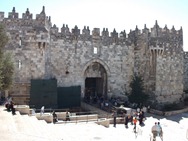

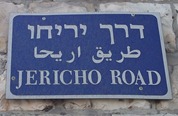
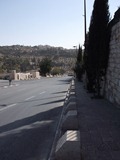
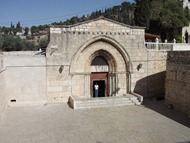

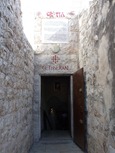
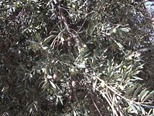
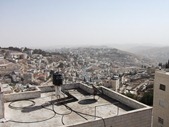

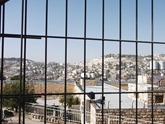

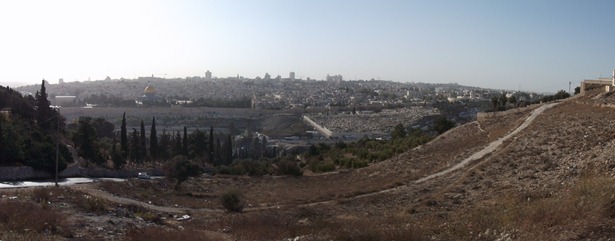
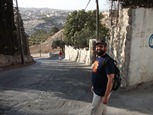


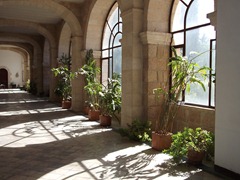
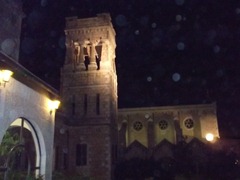

 Leaders are readers. Read lots of stuff. Blogs, books, magazines. Read the best stuff in your area. Read fiction. Read bestsellers. Read classics. Read books you’re pretty sure you’re going to disagree with. Just read. Seriously. It’s a skill you can develop.
Leaders are readers. Read lots of stuff. Blogs, books, magazines. Read the best stuff in your area. Read fiction. Read bestsellers. Read classics. Read books you’re pretty sure you’re going to disagree with. Just read. Seriously. It’s a skill you can develop.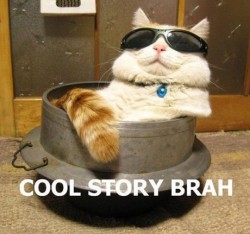
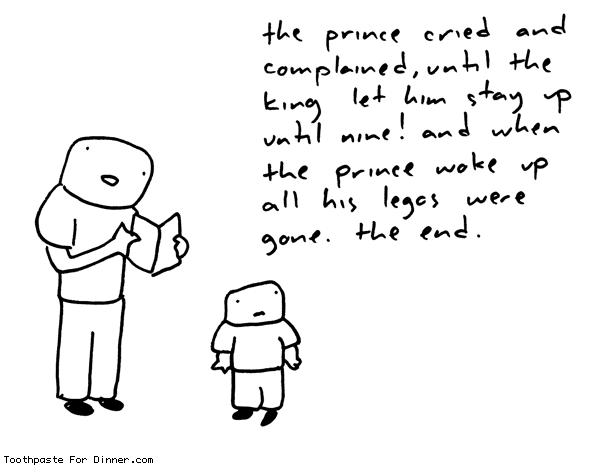
 I don’t usually get weird about birthdays, but a couple weeks before I turned 30 (on October 23), it hit me that – arbitrary or not, 30 is a pretty big milestone. Since then, I’ve been wondering what I’ve learned in my first 30 years of life. Here’s what I’ve come up with, 5 at a time!
I don’t usually get weird about birthdays, but a couple weeks before I turned 30 (on October 23), it hit me that – arbitrary or not, 30 is a pretty big milestone. Since then, I’ve been wondering what I’ve learned in my first 30 years of life. Here’s what I’ve come up with, 5 at a time!